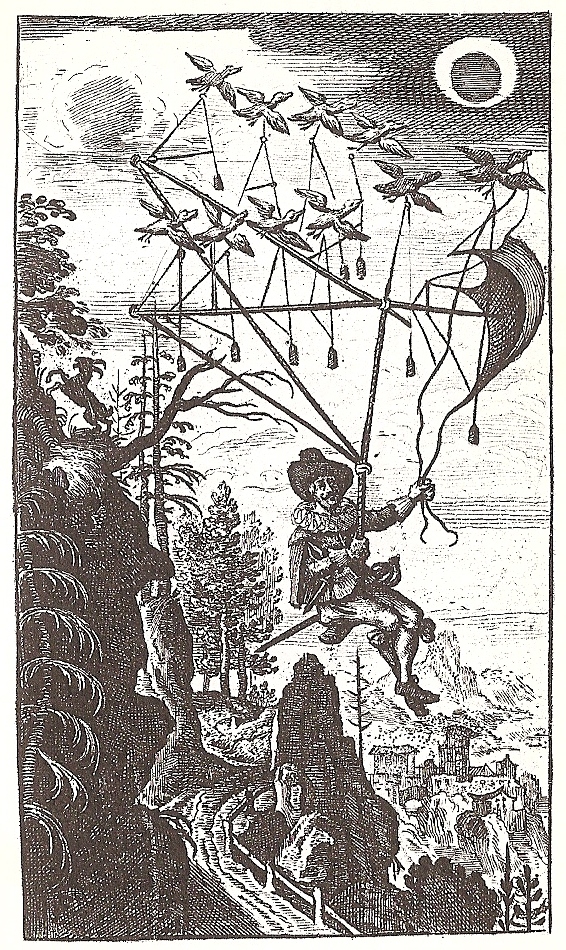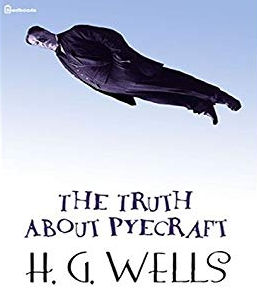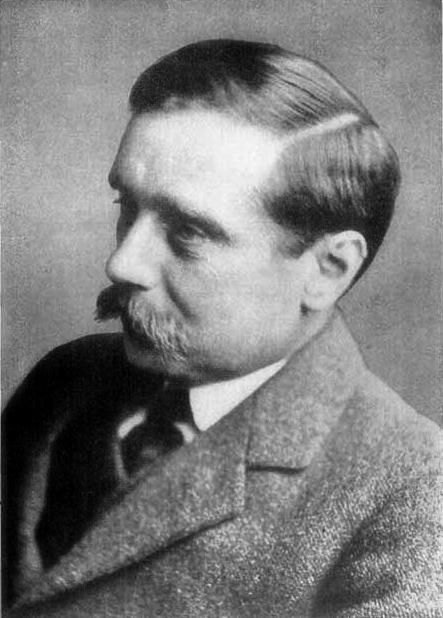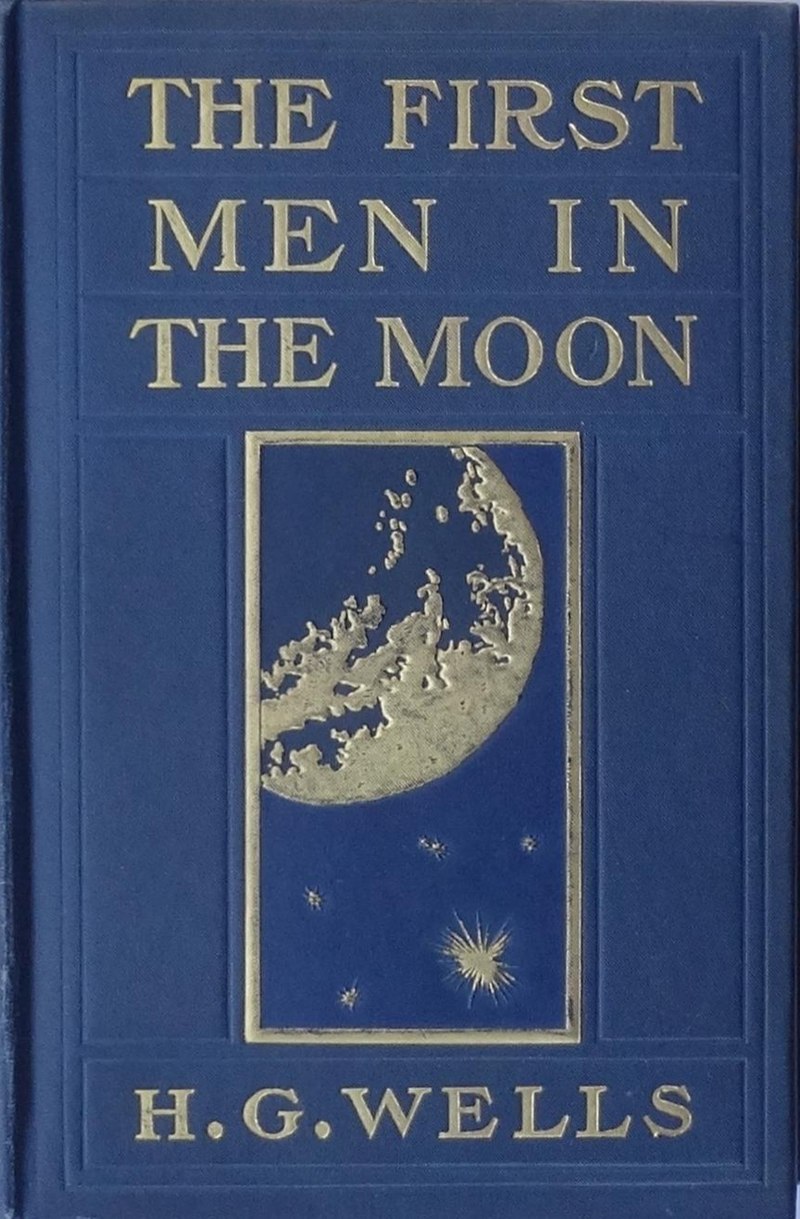The First Men in the Moon is a scientific romance by the English author H. G. Wells (1866–1946), although the author himself preferred the term social fable.[1] It was originally serialised in The Strand Magazine Monthly publication founded by George Newnes, published 1891–1950, credited with introducing the short story to a British audience. from December 1900 to August 1901,[2] and published in book form in 1901.[3]
Monthly publication founded by George Newnes, published 1891–1950, credited with introducing the short story to a British audience. from December 1900 to August 1901,[2] and published in book form in 1901.[3]
The novel tells the story of a journey to the Moon undertaken by the two protagonists: the narrator, Mr. Bedford, and the eccentric scientist Mr. Cavor. Upon their arrival on the surface of the Moon they discover that it is inhabited by a sophisticated extraterrestrial civilisation of insect-like creatures they call Selenites, after Selene, the Greek Moon goddess.
Synopsis
Bedford is a London businessman who has retreated to the countryside to write a play, which he hopes will be the solution to his financial problems. He rents a small house in Lympne, Kent where he can work in peace, but is bothered every afternoon, at precisely the same time, by a passer-by making odd noises. After two weeks Bedford accosts the man, who proves to be a reclusive physicist named Mr. Cavor. Bedford learns that Cavor is developing a new material, cavorite, which can negate the force of gravity.
Cavorite has the property of making the air above it weightless, allowing the material to shoot off into space; Bedford is not slow to realise the commercial possibilities, and the ensuing wealth that could be accumulated. To control cavorite’s anti-gravity effect, Cavor proposes a spherical spaceship made of steel, lined with glass, and with sliding windows or blinds made of cavorite by which it can be steered. He persuades a reluctant Bedford to undertake a voyage in such a vessel to the Moon, which Cavor believes to be lifeless.
Once on the surface of the Moon, the two men do indeed encounter a desolate landscape, but as the Sun rises the thin, frozen atmosphere vaporises, and strange plants begin to grow with extraordinary rapidity. Bedford and Cavor leave their capsule, but get lost in the rapidly growing jungle. They hear a mysterious booming coming from beneath their feet, and encounter great fat monsters they dub mooncalves being tended by insect-like five-foot-high Selenites, members of a complex and technologically sophisticated society living underground.
Growing hungry, Bedford and Cavor eat from some massive coral-like fungal growths, which results in their inebriation. Wandering drunkenly, they are captured by a party of six extraterrestrials and imprisoned. They manage to escape, but during their flight several Selenites are killed. Regaining the surface of the Moon, the men split up to search for their spaceship. Cavor is injured in a fall and is recaptured, but Bedford finds the ship and returns to Earth alone, after collecting some of the gold so abundant on the Moon.
By good fortune Bedford lands in the sea off the English coast, near the seaside town of Littlestone, not far from his point of departure. His financial situation is secured by his hoard of lunar gold, but he loses the sphere when a curious boy named Tommy Simmons climbs into the unattended ship and shoots off into space. Bedford publishes his story in The Strand Magazine Monthly publication founded by George Newnes, published 1891–1950, credited with introducing the short story to a British audience., and learns that a Dutch electrician, Mr. Julius Wendigee, who has been experimenting with radio, has picked up fragments of radio broadcasts from Cavor sent from inside the Moon. During a period of relative freedom, Cavor has taught English to two Selenites, and in return has learned much about their lunar society.
Monthly publication founded by George Newnes, published 1891–1950, credited with introducing the short story to a British audience., and learns that a Dutch electrician, Mr. Julius Wendigee, who has been experimenting with radio, has picked up fragments of radio broadcasts from Cavor sent from inside the Moon. During a period of relative freedom, Cavor has taught English to two Selenites, and in return has learned much about their lunar society.
In his transmissions Cavor explains that Selenites exist in thousands of forms, and find fulfilment in carrying out the specific social function for which they have been brought up; specialisation is the essence of their society. Cavor tells the Selenites of humanity’s propensity for war, much to their consternation, and Bedford believes that revelation may explain why Cavor’s transmissions were terminated as he was describing how to make cavorite. Cavor’s final fate is unknown, but Bedford is certain that there will be no further radio transmissions from the Moon.
Themes
Although notionally an account of a trip to the Moon, which it undoubtedly is, including as it does details accurately described such as “weightlessness, zero gravity, radio communication with earth, re-entry and splashdown”,[4] The First Men in the Moon is at its heart an exploration of Wells’s early sociological thinking about how individual freedom and efficient social organisation can be reconciled.[5] Wells disliked the growing trend for over-specialisation, which he had previously used as a plot device in The Time Machine (1895), with the surface-living Eloi and the labouring Morlocks living underground.[6]
The critic and science fiction writer Brian Stableford has argued that The First Men in the Moon is the first alien dystopia.[7]
Critical reception
Wells considered The First Men in the Moon to be probably the best of his scientific romances, but the French novelist Jules Verne – who published his own account of a manned trip to the Moon, De la Terre à la Lune (From the Earth to the Moon) in 1865 – was openly hostile to the work, and in particular to Wells’s introduction of cavorite as an unscientific plot device.[8][a]In Jules Verne’s novel, the men are fired from a gigantic space gun.
Soon after the novel’s publication, the Irish writer Robert Cromie accused Wells of having stolen from his own novel, A Plunge into Space (1890), which also featured an anti-gravity device, used by his protagonists to travel to Mars.[9] But the idea of an anti-gravity substance was by no means new. In the early 17th-century novel The Man in the Moone Novel by the English divine and Church of England bishop Francis Godwin (1562–1633), describing a "voyage of utopian discovery"., the author, Bishop Francis Godwin, describes a stone called Ebelus, which his protagonist is given as a leaving gift by the Lunars when he leaves the Moon to return to Earth; when one side of the stone is clasped to the skin it renders a man weightless, or half as heavy again if the other side is touched.
Novel by the English divine and Church of England bishop Francis Godwin (1562–1633), describing a "voyage of utopian discovery"., the author, Bishop Francis Godwin, describes a stone called Ebelus, which his protagonist is given as a leaving gift by the Lunars when he leaves the Moon to return to Earth; when one side of the stone is clasped to the skin it renders a man weightless, or half as heavy again if the other side is touched.
Commentary
Wells also attempts to instruct his readers in the distinction between weight and mass in his humorous short story “The Truth About Pyecraft” Short story by H. G. Wells published in 1903, about a fat man who loses so much weight that he begins to float..
Short story by H. G. Wells published in 1903, about a fat man who loses so much weight that he begins to float..
See also
- List of works by H. G. Wells
 List of publications written by H. G. Wells during the more than fifty years of his literary career.
List of publications written by H. G. Wells during the more than fifty years of his literary career.
Notes
| a | In Jules Verne’s novel, the men are fired from a gigantic space gun. |
|---|
References
Works cited
External links
- Full text of The First Men in the Moon at Project Gutenberg
This article may contain text from Wikipedia, released under the Creative Commons Attribution-ShareAlike 4.0 International License.



